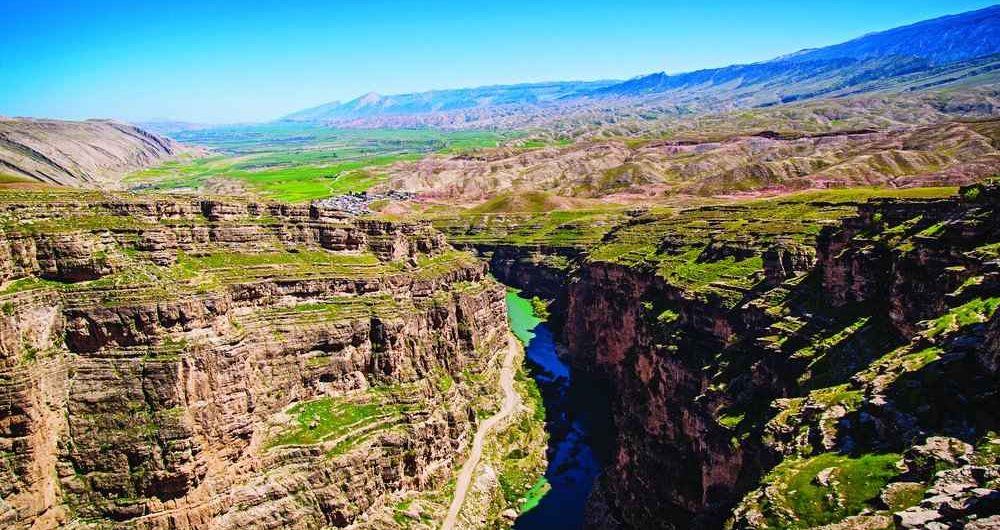Ilam
Ilam is the capital of the province of the same name. The city is bordered to the east by the Kabir Kuh mountain range and to the west by Iraq. The city is populated mainly by Kurds. Like many other parts of Iran, the history and architecture of Ilam spans various historical and contemporary periods.
Ilam’s Vali Castle, Falahati Mansion, and Mirqolam Castle are examples of some of the buildings that have survived to this day. The house with a patio is the main type of building of this period. And brick is the main construction material for these buildings. Passive thermal techniques indicated for traditional Iranian buildings are commonly used. The castle has a central courtyard surrounded by trees that together create shade and moisture, providing a green landscape to the courtyard. Here you can see a classic Iranian courtyard.
Sarabele town
Located 18 kilometers northwest of Ilam, between the Piran and Khorheh mountains, this town enjoys a mild and rather humid climate. The Chardavol River, which starts at Kabir Kuh, runs through the village and joins the Seimareh River.
The most important historical monument of the town is Taq-e Bostán, belonging to the Achaemenid period.
If you are passionate about mountains, hiking and historical landscapes synthesized with a touch of history and anthropology, SITO Travel will help you organize your trip to Iran. Contact us because our experience is born and developed in this field.
Chamava waterfalls
Located 18 kilometers from Ilam, on the Ilam-Saleh Abad road, between the town of Chamava and Marberé, this high waterfall is formed between the rocks flowing downward. Finally, it ends at the Godar Khosh River. Like the rest of the nature of the Ilam region, the waterfall can offer a day of hiking and relaxation among the rivers that meander between the high and low mountains.
Chenar Cemetery
Located in the Chenarbash area of Ilam, this historic cemetery belongs to the first millennium BC. Some discoveries have brought to light a special method of burial, which consists of the dead being buried in small and large clay pots with their belongings according to their traditions.
Assyrian inscription: Gol
This inscription is engraved on the wall of a mountain in the town of Gol Gol, 25 kilometers from Ilam. The inscription, which is more than 3,000 years old, includes the figure of an Assyrian soldier with a helmet holding an arrow and above his head a moon and a star are observed. At the bottom of the inscription there are some phrases in cuneiform script.
Vali Castle
Vali Castle in Ilam is one of the most important monuments of the Qajar period in the city of Ilam, which was built by Khan Vali in 1908. This monument consists of different parts such as the harem, the bedroom, the hall of mirrors and the basement prison. Vali Castle has functioned for years as an anthropological museum which is unique and most of its monuments date back to the Sassanid period.



Comments